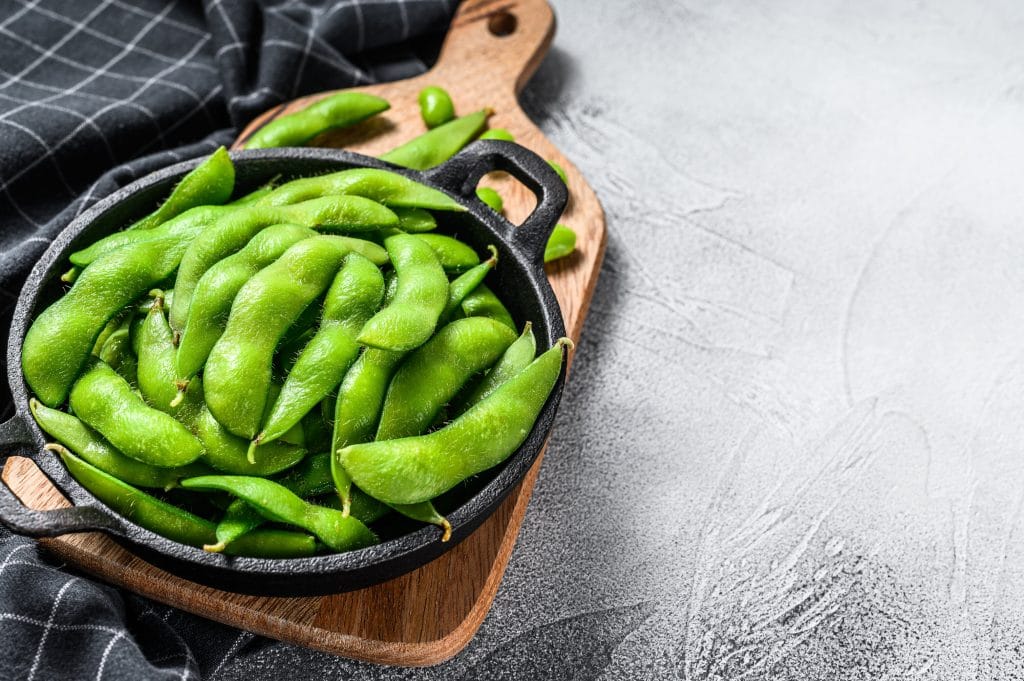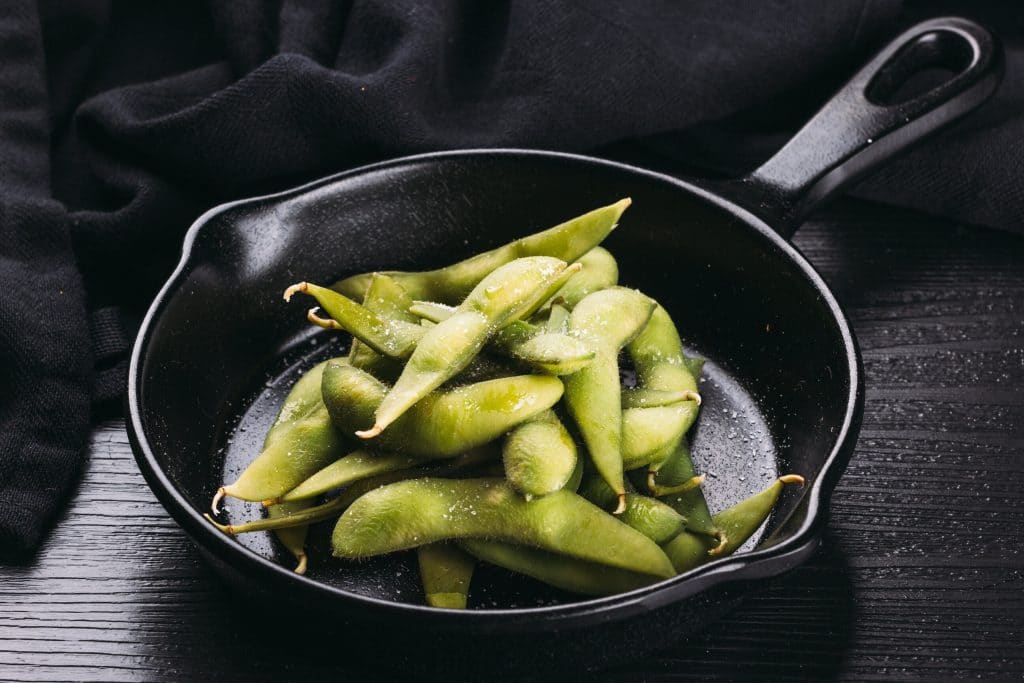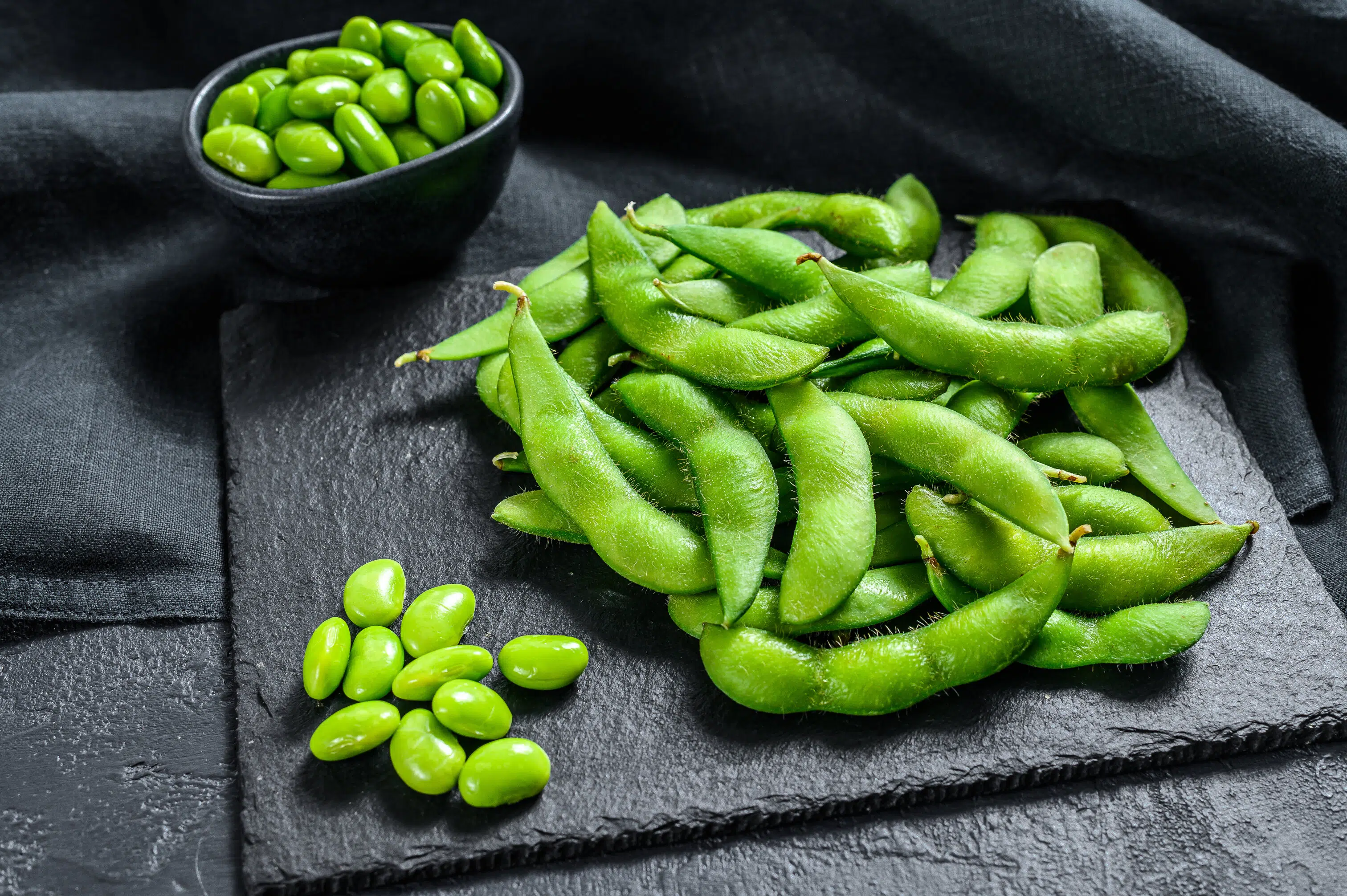Can You Reheat Edamame?
Important Note: When you buy through our links, we may earn a commission. As an Amazon Associate we earn from qualifying purchases. Content, pricing, offers and availability are subject to change at any time - more info.
Edamame or fresh soybeans make a delicious and nutritious snack or addition to a salad, stirfry, or Asian meal. What if you have some leftovers from another meal? Can you reheat edamame?
You can reheat edamame from the refrigerator or frozen, in the microwave or air-fryer, or by steaming, boiling, or roasting. You can also add edamame to a stirfry. Take care not to overcook the edamame when reheating as the beans will lose their fresh green color and crispness.
Edamame reheat successfully and efficiently, but your choice of reheating method will depend on how you first cooked the beans and whether or not they are seasoned.
Can You Reheat Edamame?

Edamame are delightfully tasty as they are fresh young soybeans, picked at their most tender. You can find them sold in their pods or as shelled beans. Either way, edamame beans need to be cooked as they are inedible raw.
Most people cook the beans in their pods because the shells add flavor. Once cooked to an al dente texture, the beans pop out of their hulls easily and are incredibly moreish, sprinkled with salt.
If you have leftover edamame, you can either keep them in their pods or shell them first. Freeze or cover them and keep them in the fridge for three to four days.
Reheating these tasty, protein-filled morsels is easy. Let’s look at the best ways to reheat edamame.
The Best Ways To Reheat Edamame

How you decide to reheat your edamame will depend on how you cooked them the first time around and whether they are shelled or not.
Because they reheat very quickly, it doesn’t matter whether the edamame are frozen or not.
Using Microwave
Best For: Shelled, unshelled, cooked, frozen, seasoned, or flavored edamame
The most convenient way of reheating edamame is in the microwave, especially if your beans have already been seasoned — other heating methods will dilute the seasoning or wash it off altogether.
The challenge with microwaving as a reheating method is that the beans can easily overcook. Keep an eye on the edamame beans as they heat so that they don’t lose their crunch.
- Place your edamame in a microwave-safe container.
- Add a teaspoon of water and cover with plastic wrap, pierced a couple of times with a fork to help to keep the beans moist and tender.
- If your beans are straight from the fridge, heat them on medium heat for 30 to 60 seconds.
- If your beans are frozen, heat them for one to two minutes on medium heat. Stir the beans midway through heating.
- Let the beans stand for a minute before serving.
By Boiling
Best For: Shelled, unshelled, cooked, frozen, unseasoned edamame
Because most edamame beans are sold frozen, boiling is the most common way of cooking them. It makes sense that boiling is an excellent method of reheating edamame.
Boiling works best for unseasoned edamame as the boiling process will remove any existing seasoning.
Important Note: Take care not to overcook your edamame when boiling them as they quickly turn grey, mushy, and unappealing.
- Bring a pan of well-salted water to a boil.
- Add the edamame beans.
- If your beans are straight from the fridge, boil for 30 to 60 seconds.
- If your beans are frozen, cook for two to three minutes.
- Drain the beans thoroughly, season, and serve hot or room temperature.
By Steaming
Best For: Shelled, unshelled, cooked, frozen, unseasoned edamame
If you’re worried about boiling the beans to mushiness or rinsing off all your seasonings, steaming is a good choice of reheating. It’s also a good idea if you’re already cooking something else and can just pop the beans on top of the pot.
- Fill the base of your steamer with boiling water. (You can also create a makeshift steamer with a pot and colander.)
- Place the beans in the steamer or a colander over the pot.
- Cover the beans to ensure that they steam adequately.
- If your beans are straight from the fridge, steam them for one to two minutes.
- If your beans are frozen, steam them for three to four minutes.
- Season and serve.
By Frying
Best For: Stir-fries, unshelled, cooked, seasoned edamame
Frying leftover edamame works well to give the beans a bit of a char and a crunch, making a change from the usual steamed or boiled beans, delicious though they are.
This heating method works well if you’ve got unshelled, seasoned beans, as you can play with the seasonings in the frying pan. (Think of soy sauce, chili sauce or oil, oyster sauce, teriyaki, etc.)
You can also add leftover unshelled edamame to a stirfry or fried rice. Frying is then your obvious reheating method.
Avoid frying as a reheating method for frozen beans, as the moisture will prevent them from crisping up nicely. Thaw them before adding to the pan –put them in warm water for a few minutes to defrost.
- On a hot stove, add a drizzle of oil in a heavy frying pan — sesame and peanut oil are traditional choices for Asian cuisine.
- Once your oil is hot, add the beans and cook for two to three minutes until they char slightly.
- Season and cook for a minute more, shaking the pan to turn the beans so that they char on both sides.
- Serve hot. (Fried edamame beans don’t do well at room temperature as they can become soggy.)
By Roasting
Best For: Shelled, cooked, seasoned edamame
If you’re a fan of roasted chickpeas, try roasting your leftover edamame. Roasting is an ideal method of preparing unshelled edamame, especially if you have seasoned them already.
As with the frying method, avoid roasting shelled, frozen beans — rather hull and thaw the first.
Roasting works in both an ordinary oven and a toaster oven.
- Preheat your oven to a moderate temperature of 375⁰F (190⁰C).
- Make sure the edamame beans are as dry as possible – any water will result in your beans being steamed and not crisping up.
- Spread the edamame beans in a single layer on a baking tray.
- Sprinkle and then toss the beans in olive oil, salt, and pepper. (Other tasty additions are chili, garlic, onion powder, basil, oregano, cumin, paprika, or parmesan cheese.)
- Roast the edamame for 15 to 20 minutes, shaking the tray halfway through to turn the beans for an even char. (The roasting time will be longer for uncooked beans.)
- Once roasted, the beans will be golden brown with dry edges but a tender interior.
- Serve hot.
Using An Air-Fryer
Best For: Shelled, cooked, seasoned edamame
Air-fryers cook via roasting rather than frying, so they are ideal for reheating edamame. As with roasting in a conventional or toaster oven, make sure your edamame beans are as dry as possible.
- Preheat your air-fryer to 400⁰F (200⁰C).
- Place your edamame in the fryer basket with any spices or seasonings.
- Cook for nine to ten minutes, shaking halfway to turn the beans.
- Serve hot.
So, Can You Reheat Edamame?

Edamame beans are a perfect vegetable for reheating, as they reheat quickly and retain their crunch and flavor. The simplest method of reheating edamame is in the microwave but boiling, steaming, roasting, and frying also work well.
























